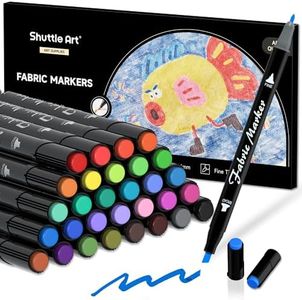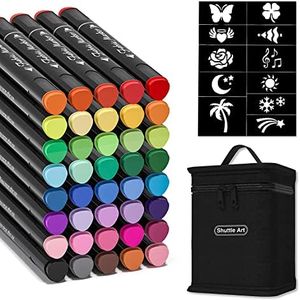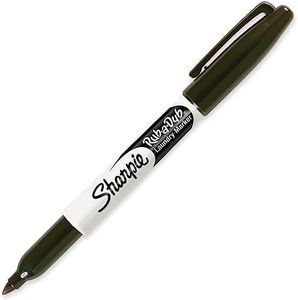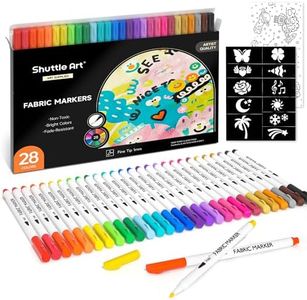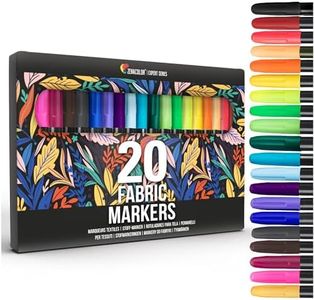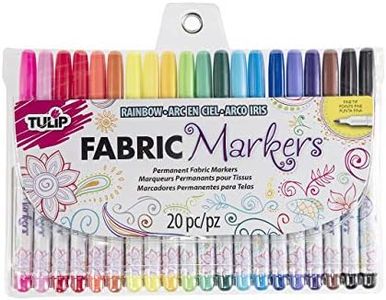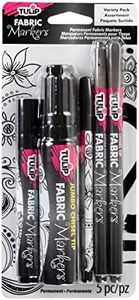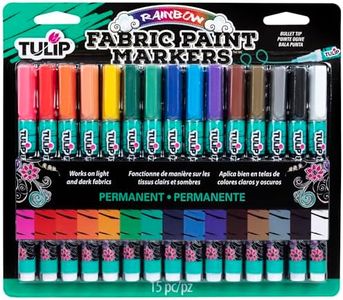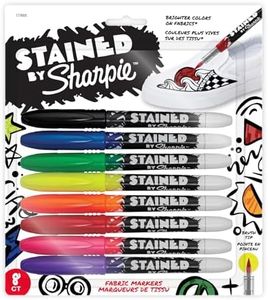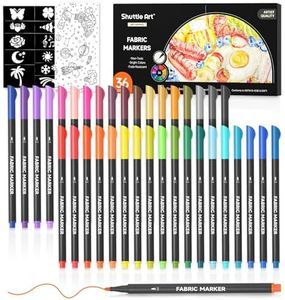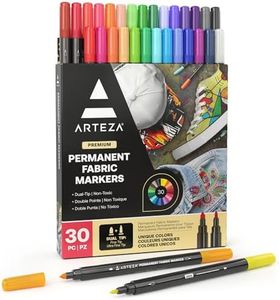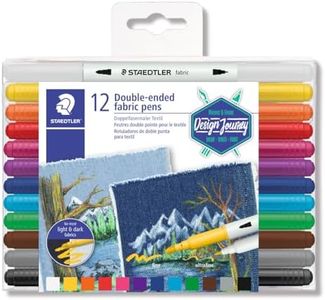We Use CookiesWe use cookies to enhance the security, performance,
functionality and for analytical and promotional activities. By continuing to browse this site you
are agreeing to our privacy policy
10 Best Fabric Markers
From leading brands and best sellers available on the web.Buying Guide for the Best Fabric Markers
Choosing the right fabric markers can make all the difference when it comes to personalizing clothing, bags, or any kind of fabric project. With so many options available, it’s important to understand the main features that will affect your creative work and durability of the design. Matching the style and needs of your project with the right marker can help you avoid disappointment, keep your projects looking vibrant, and make your creative process smoother.Ink TypeInk type refers to the kind of colorant used inside the marker. The two main types are permanent and washable (sometimes called temporary). Permanent ink markers are made to withstand repeated washing without fading, making them ideal for clothing or fabric that will be used and laundered. In contrast, washable markers are great for temporary designs or projects that don’t need to last. Your main choice here depends on how long you want your design to stay on the fabric; if it's a keepsake or daily wear item, go permanent. If you’re just practicing or designing something to be washed out, washable ink works best.
Tip Size and ShapeTip size and shape describes the design of the marker’s writing end, which affects the kind of lines and details you can create. Small, fine-point tips are perfect for precise details, outlining, or handwriting, while larger, chisel or bullet tips are better for filling in areas quickly or drawing bolder lines. Consider your project: intricate designs and letterings do better with fine tips, while big artwork or background coloring benefits from broader tips.
Color RangeColor range is about how many and which shades are available in a marker set. Sets with a wide range allow for more creativity, blending, and special effects, while smaller sets tend to stick to basic colors. If your project needs specific shades (like pastel tones, neons, or skin tones), look for sets that include them. For basic labeling or simple designs, a few classic primary colors might be all you need.
Fabric CompatibilityFabric compatibility tells you which types of fabric a marker works best on. Some markers are universal and can handle anything from cotton to synthetics, while others are optimized for natural fibers or specific blends. Always check packaging or product info for fabric recommendations. If you plan on decorating a mix of materials (like canvas, denim, or T-shirts), go for markers that clearly state they’re multi-fabric compatible.
Wash and Fade ResistanceWash and fade resistance relates to how well the color stands up to repeated washing and sunlight exposure. High resistance means your design will stay sharp and vibrant even after many uses, which is essential for clothing or items you’ll use often. If you’re making a decorative piece for occasional use, this might not matter as much, but for anything that will be handled and cleaned, stronger wash and fade resistance is crucial.
Drying Time and BleedDrying time is how quickly the ink dries on fabric, and bleed refers to whether the ink spreads beyond where you apply it. Fast-drying, low-bleed markers are best for layered designs, sharp outlines, or working on thin fabrics. If the ink takes too long to dry or bleeds, details may get fuzzy, especially on lightweight or stretchy fabrics. If you desire crisp results, especially with detailed work, pick markers labeled as quick-drying and low-bleed.

